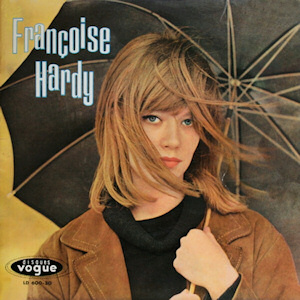| The Early Years 1964-1965 | ||||
|---|---|---|---|---|
 | ||||
| Compilation album by The Monks | ||||
| Released | April 14, 2009 | |||
| Recorded | 1964, September 1965 | |||
| Genre | ||||
| Length | 36:13 | |||
| Label | Light in the Attic Records | |||
| Producer | Matt Sullivan | |||
| The Monks chronology | ||||
| ||||
| Professional ratings | |
|---|---|
| Review scores | |
| Source | Rating |
| Pitchfork | 7.5/10 [1] |
The Early Years 1964–1965 is a compilation album by the German-based American garage rock the Monks, and was released on Light in the Attic Records on April 14, 2009. The album chronicles the group's recordings as the Five Torquays, which was a traditional beat band, up to their demo sessions as the Monks in late 1965. It exemplifies a period in the Monks' musical career in which their rebellious avant-garde style was in its primitive stages. Most of the songs on The Early Years 1964-1965 were featured on the band's only studio album Black Monk Time in 1966. The compilation marks the third time that the demos have been released; however, this latest installment includes much more extensive liner notes and rare photographs.
A compilation album comprises tracks, which may be previously released or unreleased, usually from several separate recordings by either one or several performers. If by one artist, then generally the tracks were not originally intended for release together as a single work, but may be collected together as a greatest hits album or box set. If from several performers, there may be a theme, topic, time period, or genre which links the tracks, or they may have been intended for release as a single work—such as a tribute album. When the tracks are by the same recording artist, the album may be referred to as a retrospective album or an anthology.
Garage rock is a raw and energetic style of rock and roll that flourished in the mid-1960s, most notably in the United States and Canada, and has experienced various revivals since then. The style is characterized by basic chord structures played on electric guitars and other instruments, sometimes distorted through a fuzzbox, as well as often unsophisticated and occasionally aggressive lyrics and delivery. Its name derives from the perception that groups were often made up of young amateurs who rehearsed in the family garage, although many were professional.

The Monks, referred to by the name monks on record sleeves, were an American garage rock band formed in Gelnhausen, West Germany in 1964. Assembled by five American GIs stationed in the country, the group grew tired of the traditional format of rock, which motivated them to forge a highly experimental style characterized by an emphasis on hypnotic rhythms that minimized the role of melody, augmented by the use of sound manipulation techniques. The band's unconventional blend of shrill vocals, feedback, and guitarist David Day's six-string banjo baffled audiences, but music historians have since identified the Monks as a pioneering force in avant-garde music. The band's lyrics often voiced objection to the Vietnam War and the apparently dehumanized state of society, while prefiguring the harsh and blunt commentary of the punk rock movement of the 1970s and 1980s. The band's appearance was considered as shocking as its music, as they attempted to mimic the look of Catholic monks by wearing black habits with cinctures symbolically tied around their necks, and hair worn in partially shaved tonsures.





















